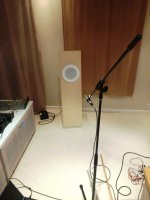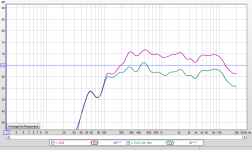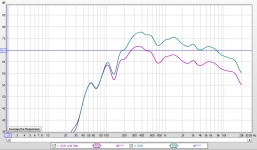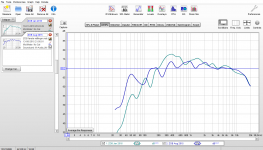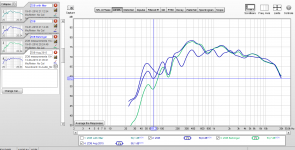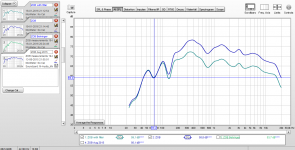Hi
I have build a pair of Decware ZOB open baffle speakers, using a Cube Audio F180 Fullrange driver. Here are my experiences and a review.
Decware ZOB
DECWARE Zen Open Baffle full range single driver crossoverless loudspeaker model ZOB
After reading the white papers on the ZOBs from decware, I decided to build a pair of Decware ZOB speakers myself. This is my experiences.
Why?
I guess curiosity. I like the uncoloured sound of open baffle speakers, and I like the virtues of a single driver fullrange speaker. A fullrange driver in a open baffle can sound great, but usually the bass is missing. So I was intrigued by this quote from Decwares homepage:
“It's quite literally like pulling perfect bass out of thin air with no woofer, no compression and no cabinet vibrations!
With the full range driver up high at ear level and in a narrow baffle, reference imaging and a total disappearing act is achieved - making this speaker qualify for the axiom "Having your cake and eating it too!”
Bass broadcasting.
The design has an interesting feature. Bass Broadcasting. The quality of the bass generated inside the box of the speaker is supposedly of such good quality that it can be captured by a microphone and “broadcasted” to another set of speakers to reinforce the bass. Even though the speakers are suppose to produce good bass down to 50Hz-40Hz, it is an open baffle design and it is only a 8” driver. Reading some of the few reviews on the internet lent me to understand that the speakers are a bit lean after all. In my listening room I like to position my speakers far from the walls, to get the best soundstage and depth perception. But this position is not optimal for my bass output. So with the ZOB’s I expect to get good detailed bass, but on the lean side. This is where the Bass broadcasting is interesting. If I can get my subs to boost the bass a little, then this could be what I’m looking for.
The Building process.
I have to start by saying that I am NO wood craftsman by any means. But I’m trying my best 🙂
This part is intended as inspiration for others who would like to build these speakers and like me bump into questions as the process goes on. Also I have to say that I made some small design adjustments and minor errors which led to some (IMHO) nice design features.
My design goals
Front baffle af birch veneer (for looks 🙂 )
Integrated microphone for bass broadcasting.
Design adjustments:
Building the speakers
First of all you’ll have to download the drawings. They are fairly easy to follow but are unfortunately only in imperial units. I live in Denmark and use the metric system. So a little conversion was needed.
I Decided to do the front baffle in birch veneer. I already had some 15mm birch veneer, so I glued 2 sheets together to get a total thickness of the front baffle of 30mm. This is a little less that what the plans suggests but I think it works fine. The body of the speaker was made from 19mm MDF.
I have also posted some pictures of the damping. If someone has some comments on whether I used too much or too little, then please feel free to let me know.
Drivers
The FRX2 Drivers look very nice, but are a little expensive, especially not knowing what the speaker sounds like. So that was not an option. The next speaker on my wishlist was (is) the Tang Bang W8-1808. I was planning to buy the W8-1808 but came across the Cube F180. It came recommended by a local dealer Alto-hojttaler and at a price tag of 850 dkr a piece (125 usd/ 115 eur). I decided to give them a try.
Cube Audio F180 Specification:
SPL - 90 dB
Fs - 39.8 Hz
Rms - 0.72 ΩM
Qms - 3.44
Qes - 0.55
Qts - 0.48
Mms - 9.86 g
BL - 4.98 Tm
VAS - 39.8 L
Sd - 133 cm2
Vmax - ±4mm
CUBE AUDIO FULLRANGE AND HORN SPEAKERS
The Sound
And now to the moment everyone has been waiting for. The sound. From 150 Hz and up they are excellent, from 150 Hz and down I had expected more output. Overall they are very neutral and very detailed. The soundstage and focus are on par with anything I have heard at any price. The bass is as detailed as promised, but there is less output than expected. Positioning close to a rear wall is almost a must in my opinion.
At first I found the treble to be somewhat rolled off and dark. I raised the rear of the speaker about 5 cm (2”) to get the front of the speakers to be vertical rather than slightly pitched backwards. This makes the speakers fire directly at my ears. This helped. Now the treble is nice and smooth.
Midrange. Excellent. This is where the speakers really shine through.
Bass. The upper bass (lower midrange)say from 150 Hz to 400 Hz is lean with a slight peak at around 300 Hz. I don’t know where the peak is coming from. Maybe the front baffle which is only mounted by 4 screws. 2 in the top, and 2 in the bottom. It is not a big thing, but it does give a very slight colouring of the sound.
As mentioned earlier the bass very detailed, but lean. I’m missing the bridging from about 200 Hz to 80 Hz. Under 80 Hz the vented port kicks in and does lift the bass output, but it is still too lean for my taste. Now I have to fair to the construction and say that the positioning in my room is not optimal, for the bass output. The speakers are at least 120 cm (4ft) from the side walls, and even further from the rear wall, and I sit almost dead center in the room (I know, I know). So maybe I’m being a little hard on the bass performance, not giving the speakers the optimum conditions.
But I had foreseen this, and prepared the speakers for “live broadcasting”. Does it work? Well yes. It definitely boosts the bass to a higher level. The big question was if there would be any kind of muddiness or delay in the bass. Well in my ears it works ok. There is no noticeable delay, but I have however detected a slight hollow sound to the bass when the right (or wrong) notes are hit. It helps to lower the subwoofer output, but this kind of defeats the whole purpose of the live broadcasting. I do have one small improvement that I want to try. The microphone is held by a short piece of MDF. This makes a hard couple to the speaker and the floor, which means that footsteps if heavy enough are being broadcasted into the subs. It is not a problem, but I would like to try to hang the mic in a softer suspension of some sort.
EDIT:
Baffle diffraction Loss Filter
I have now lived with the speakers for about 6 months. I have decided not to use the live broadcasting as I found it to color the bass too much. In stead I have made a Baffle diffraction Loss Filter (mh-audio.nl - Home) to lift the bass output (or lower the upper frequencies). Now the bass output is usable. It is still a bit lean but acceptable. Unfortunately the filter attenuates the upper frequencies by 10 dB, so the max SPL suffers.
Broadcast system:
Mic: The T.Bone BD200 (25 EUR)
Mic preamp: Behringer MX 602A
Equaliser: Behringer FBQ 3102 (was later added to system)
Subwoofer: 2 x Bag End Infra Sub 18
I have build a pair of Decware ZOB open baffle speakers, using a Cube Audio F180 Fullrange driver. Here are my experiences and a review.
Decware ZOB
DECWARE Zen Open Baffle full range single driver crossoverless loudspeaker model ZOB
After reading the white papers on the ZOBs from decware, I decided to build a pair of Decware ZOB speakers myself. This is my experiences.
Why?
I guess curiosity. I like the uncoloured sound of open baffle speakers, and I like the virtues of a single driver fullrange speaker. A fullrange driver in a open baffle can sound great, but usually the bass is missing. So I was intrigued by this quote from Decwares homepage:
“It's quite literally like pulling perfect bass out of thin air with no woofer, no compression and no cabinet vibrations!
With the full range driver up high at ear level and in a narrow baffle, reference imaging and a total disappearing act is achieved - making this speaker qualify for the axiom "Having your cake and eating it too!”
Bass broadcasting.
The design has an interesting feature. Bass Broadcasting. The quality of the bass generated inside the box of the speaker is supposedly of such good quality that it can be captured by a microphone and “broadcasted” to another set of speakers to reinforce the bass. Even though the speakers are suppose to produce good bass down to 50Hz-40Hz, it is an open baffle design and it is only a 8” driver. Reading some of the few reviews on the internet lent me to understand that the speakers are a bit lean after all. In my listening room I like to position my speakers far from the walls, to get the best soundstage and depth perception. But this position is not optimal for my bass output. So with the ZOB’s I expect to get good detailed bass, but on the lean side. This is where the Bass broadcasting is interesting. If I can get my subs to boost the bass a little, then this could be what I’m looking for.
The Building process.
I have to start by saying that I am NO wood craftsman by any means. But I’m trying my best 🙂
This part is intended as inspiration for others who would like to build these speakers and like me bump into questions as the process goes on. Also I have to say that I made some small design adjustments and minor errors which led to some (IMHO) nice design features.
My design goals
Front baffle af birch veneer (for looks 🙂 )
Integrated microphone for bass broadcasting.
Design adjustments:
- Front grill to accommodate different drivers of different sizes. (This was an error on my part. I cut out a hole that was too big for my Cube Audio F180 drivers, and I had to find a way to mount them.
- Front baffle thickness: 30mm rather than 38mm. ( I already had some 15mm birch veneer at my disposal)
- With of front baffle: 305mm instead of 317mm. I forgot to add the thikness of the edges for the front baffle. This left me with a front baffle width which was smaller than the width of the body. Rather that trying to add an edge to the front, I decided to cut off 3mm at a 45 degree angle of the sides of the MDF body sides. This way the enclosure/body kind of narrows in, to fit the front baffle. It actually turned out very nice 🙂
- Wooden brace at the top of the body to fasten the front baffle by screws. See pictures. Later I found out that the ZOB’s on Decwares own homepage has the brace.
Building the speakers
First of all you’ll have to download the drawings. They are fairly easy to follow but are unfortunately only in imperial units. I live in Denmark and use the metric system. So a little conversion was needed.
I Decided to do the front baffle in birch veneer. I already had some 15mm birch veneer, so I glued 2 sheets together to get a total thickness of the front baffle of 30mm. This is a little less that what the plans suggests but I think it works fine. The body of the speaker was made from 19mm MDF.
I have also posted some pictures of the damping. If someone has some comments on whether I used too much or too little, then please feel free to let me know.
Drivers
The FRX2 Drivers look very nice, but are a little expensive, especially not knowing what the speaker sounds like. So that was not an option. The next speaker on my wishlist was (is) the Tang Bang W8-1808. I was planning to buy the W8-1808 but came across the Cube F180. It came recommended by a local dealer Alto-hojttaler and at a price tag of 850 dkr a piece (125 usd/ 115 eur). I decided to give them a try.
Cube Audio F180 Specification:
SPL - 90 dB
Fs - 39.8 Hz
Rms - 0.72 ΩM
Qms - 3.44
Qes - 0.55
Qts - 0.48
Mms - 9.86 g
BL - 4.98 Tm
VAS - 39.8 L
Sd - 133 cm2
Vmax - ±4mm
CUBE AUDIO FULLRANGE AND HORN SPEAKERS
The Sound
And now to the moment everyone has been waiting for. The sound. From 150 Hz and up they are excellent, from 150 Hz and down I had expected more output. Overall they are very neutral and very detailed. The soundstage and focus are on par with anything I have heard at any price. The bass is as detailed as promised, but there is less output than expected. Positioning close to a rear wall is almost a must in my opinion.
At first I found the treble to be somewhat rolled off and dark. I raised the rear of the speaker about 5 cm (2”) to get the front of the speakers to be vertical rather than slightly pitched backwards. This makes the speakers fire directly at my ears. This helped. Now the treble is nice and smooth.
Midrange. Excellent. This is where the speakers really shine through.
Bass. The upper bass (lower midrange)say from 150 Hz to 400 Hz is lean with a slight peak at around 300 Hz. I don’t know where the peak is coming from. Maybe the front baffle which is only mounted by 4 screws. 2 in the top, and 2 in the bottom. It is not a big thing, but it does give a very slight colouring of the sound.
As mentioned earlier the bass very detailed, but lean. I’m missing the bridging from about 200 Hz to 80 Hz. Under 80 Hz the vented port kicks in and does lift the bass output, but it is still too lean for my taste. Now I have to fair to the construction and say that the positioning in my room is not optimal, for the bass output. The speakers are at least 120 cm (4ft) from the side walls, and even further from the rear wall, and I sit almost dead center in the room (I know, I know). So maybe I’m being a little hard on the bass performance, not giving the speakers the optimum conditions.
But I had foreseen this, and prepared the speakers for “live broadcasting”. Does it work? Well yes. It definitely boosts the bass to a higher level. The big question was if there would be any kind of muddiness or delay in the bass. Well in my ears it works ok. There is no noticeable delay, but I have however detected a slight hollow sound to the bass when the right (or wrong) notes are hit. It helps to lower the subwoofer output, but this kind of defeats the whole purpose of the live broadcasting. I do have one small improvement that I want to try. The microphone is held by a short piece of MDF. This makes a hard couple to the speaker and the floor, which means that footsteps if heavy enough are being broadcasted into the subs. It is not a problem, but I would like to try to hang the mic in a softer suspension of some sort.
EDIT:
Baffle diffraction Loss Filter
I have now lived with the speakers for about 6 months. I have decided not to use the live broadcasting as I found it to color the bass too much. In stead I have made a Baffle diffraction Loss Filter (mh-audio.nl - Home) to lift the bass output (or lower the upper frequencies). Now the bass output is usable. It is still a bit lean but acceptable. Unfortunately the filter attenuates the upper frequencies by 10 dB, so the max SPL suffers.
Broadcast system:
Mic: The T.Bone BD200 (25 EUR)
Mic preamp: Behringer MX 602A
Equaliser: Behringer FBQ 3102 (was later added to system)
Subwoofer: 2 x Bag End Infra Sub 18
Attachments
-
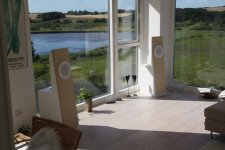 ZOB 5.JPG263.4 KB · Views: 713
ZOB 5.JPG263.4 KB · Views: 713 -
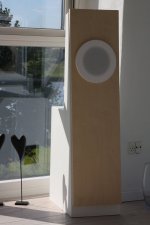 ZOB 4.JPG152.6 KB · Views: 708
ZOB 4.JPG152.6 KB · Views: 708 -
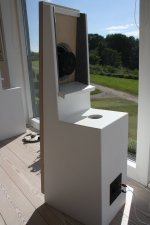 ZOB 2.JPG199.3 KB · Views: 1,215
ZOB 2.JPG199.3 KB · Views: 1,215 -
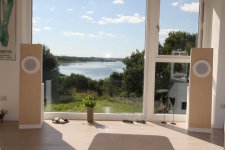 ZOB 3.JPG251.5 KB · Views: 689
ZOB 3.JPG251.5 KB · Views: 689 -
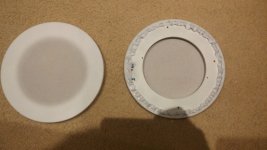 IMG_20150811_210841.jpg142.2 KB · Views: 292
IMG_20150811_210841.jpg142.2 KB · Views: 292 -
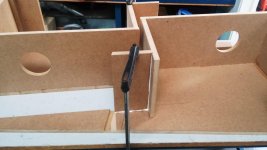 IMG_20150730_094501.jpg73.6 KB · Views: 283
IMG_20150730_094501.jpg73.6 KB · Views: 283 -
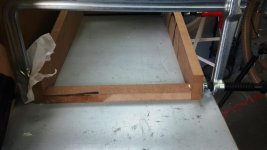 IMG_20150731_125308.jpg64.8 KB · Views: 264
IMG_20150731_125308.jpg64.8 KB · Views: 264 -
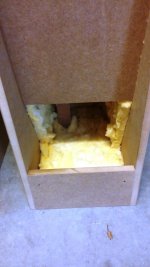 IMG_20150805_154020.jpg161.4 KB · Views: 283
IMG_20150805_154020.jpg161.4 KB · Views: 283 -
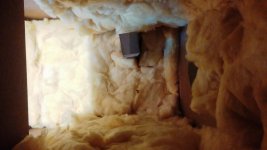 IMG_20150805_154036.jpg129.3 KB · Views: 307
IMG_20150805_154036.jpg129.3 KB · Views: 307 -
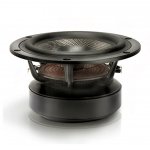 Cube F180 speaker.jpeg48.8 KB · Views: 681
Cube F180 speaker.jpeg48.8 KB · Views: 681
Great work and beautiful construction. I have been curious as well and never believed that the zen bass coupling would be efficient enough. I suspected it was not sufficient when reading on website about the "broadcast mode" and how the external woofer and amp made better.
Do you have any measurements you can share?
Congratulations.

Do you have any measurements you can share?
Congratulations.

I did some measurements, but I don't remember if I saved them. I'll post them if I can find them.
Every time that I go to one of the Decware product summaries the image of Richard Thalheimer comes to mind. He was the magazine ad high tech product pitchman and founder of The Sharper Image brand of yore. A lot of hot air and over the top claims for products that otherwise would have been considered just ordinary. Too bad that Steve Deckert of Decware apparently comes from the same pitchman school.
Apparently this speaker design alone does not create sufficient bass without some assistance. Kudos to the OP for his excellent build and his efforts to improve its performance.
Apparently this speaker design alone does not create sufficient bass without some assistance. Kudos to the OP for his excellent build and his efforts to improve its performance.
sismik11, that is very nicely built speaker
however, that fullrange rolls off pretty much below 100 Hz, and that is not even open baffle masurement, so perhaps lean bass is more than expected
some other fullrange may perform better? betsy?
it could be nice if you would have easily replaceable small front baffle, so you can swap speakers
however, that fullrange rolls off pretty much below 100 Hz, and that is not even open baffle masurement, so perhaps lean bass is more than expected
some other fullrange may perform better? betsy?
it could be nice if you would have easily replaceable small front baffle, so you can swap speakers
Attachments
I thought Deckert specifically designed the ZOB for his custom driver - a modded Dayton PS220-8 with external choke network? Did not know you can swap drivers.
sismik11, that is very nicely built speaker
however, that fullrange rolls off pretty much below 100 Hz, and that is not even open baffle masurement, so perhaps lean bass is more than expected
some other fullrange may perform better? betsy?
it could be nice if you would have easily replaceable small front baffle, so you can swap speakers
I think you have a good point about the bass output of the drivers and I would like to try some other ones when the chance comes.
But I have to say that these drivers really sound nice. Much better than expected.
Last edited:
I thought Deckert specifically designed the ZOB for his custom driver - a modded Dayton PS220-8 with external choke network? Did not know you can swap drivers.
Bingo - although there was much discussion on these fora re the driver itself
yes, Steve has some interesting ideas, and writes fun copy to read, some it even making sense. He continues to make a nice line of amps - albeit no longer as "affordable" as before, but then the same could be said for most of the Bottlehead tube lineup.
Last edited:
Hi sismik11
Awesome build, they looks just great. I have a suspension that it was you was at my place, last Saturday. We were listen to my own full rang design unit, and I bought a pair Alto horn from you.
Hilsen Frank
Awesome build, they looks just great. I have a suspension that it was you was at my place, last Saturday. We were listen to my own full rang design unit, and I bought a pair Alto horn from you.
Hilsen Frank
Hi sismik11
Awesome build, they looks just great. I have a suspension that it was you was at my place, last Saturday. We were listen to my own full rang design unit, and I bought a pair Alto horn from you.
Hilsen Frank
Hi Frank
Yes that is me 🙂. I'm qurious to see how your speaker will do in this setup.
Hilsen Mikkel
Great work and beautiful construction. I have been curious as well and never believed that the zen bass coupling would be efficient enough. I suspected it was not sufficient when reading on website about the "broadcast mode" and how the external woofer and amp made better.
Do you have any measurements you can share?
Congratulations.

I couldn't find the old measurements I did, so I've done some new once. It is just a quick and dirty measurement. The microphone is 1m from the speaker (on axis). See attached pic. I used REW for the measurements and applied 1/3 smoothing.
As you can see the output drops rapidly under 200 Hz. The Baffle diffraction filter helps a great deal though.
I can see that the bump at 300 Hz I mentioned in my 1st post has disappeared. Interesting.
It is important to emphasizes that the speakers I have build, are NOT using the same drivers as the once Decware use. Therefore these measurements are not representative for Decware's speakers.
Attachments
Thanks for that measurement. Based on this plot I can see no bass enhancement from the Zen box coupling. Unless that 54dB bump at 56Hz is the ouput.
I agree with you. I am a bit puzzled as I don't remember it as being as "bad" as the measurements show.
I have tried to measure again, but this time at my listening position. Still no coupling . I'll have to check if there is something wrong in my setup
. I'll have to check if there is something wrong in my setup
The 300 Hz bump is back. I guess that it is room related.
I have tried to measure again, but this time at my listening position. Still no coupling
 . I'll have to check if there is something wrong in my setup
. I'll have to check if there is something wrong in my setupThe 300 Hz bump is back. I guess that it is room related.
Attachments
I thought Deckert specifically designed the ZOB for his custom driver - a modded Dayton PS220-8 with external choke network? Did not know you can swap drivers.
Not as I recall. If memory serves, the ZOB was developed prior to Steve's modified PS220. The original drivers were his modified Fostex FE206E units, initially the 'FE206EM' which had the cone coloured black, the magnet & basket damped with red felt, and their 'phase-guide' (it resembles a socket from a socket set) used as a vented pole-piece / plug. Later that morphed into the 'DFR-8' which lost the felt and dyed cone, gained a modified vented pole-plug, and their 'active suspension' which consists of a large foam roll-surround glued over the top of the existing front surround to seal it. Steve calls it his 'diaphragmatic donut'.
The ZOBs shown in most of the pictures on the Decware site were using the now-defunct FE207E as the basis for the driver mods rather than the hyper-low Q FE206E. Understandable. The modified Dayton unit came later -presumably inspired by needing a higher Q driver (the 207 wasn't exactly lacking for EM damping, even if it was higher than the 206 😉 ) & something different to the Fostex units to tweak more dramatically.
I found the error. It was my Behringer Ultracurve eq. I used for the quick setup. Now I have changed to my regular setup, and now things look and sound as I know it should. I have posted the new graphs.
The 1st graph has the new measurement, the wrong Behringer measurement and the old (Aug 2015) measurement.
The 2nd graph shows the speaker with and without the Baffle Diffraction filter. Now things look descent.
I'm going to erase the old posts containing the wrong graphs if possible.
The 1st graph has the new measurement, the wrong Behringer measurement and the old (Aug 2015) measurement.
The 2nd graph shows the speaker with and without the Baffle Diffraction filter. Now things look descent.
I'm going to erase the old posts containing the wrong graphs if possible.
Attachments
I'm going to erase the old posts containing the wrong graphs if possible.
Didn't find a way to edit the old posts.
Sorry for the confusion.
🙁🙁🙁🙁
- Status
- Not open for further replies.
- Home
- Loudspeakers
- Full Range
- Decware Zob

